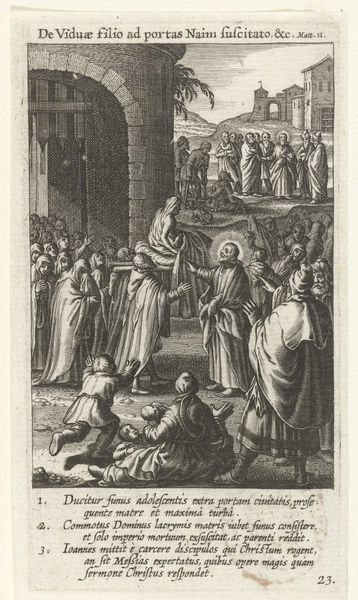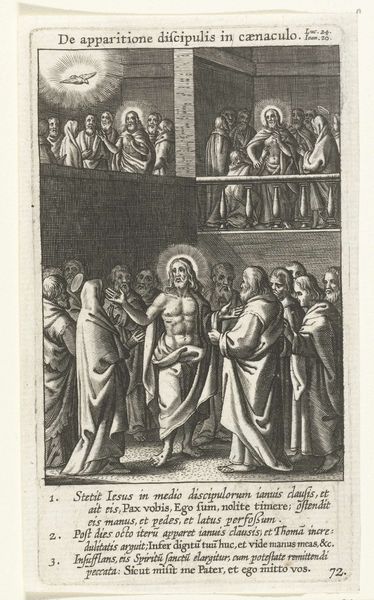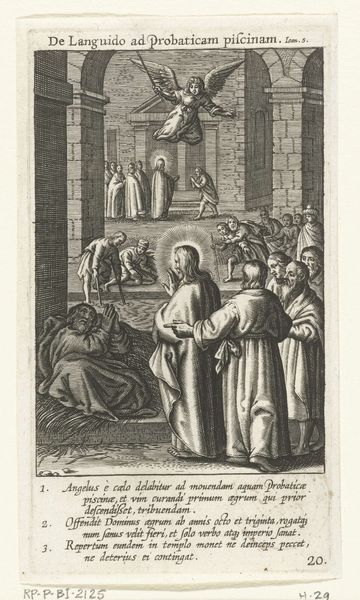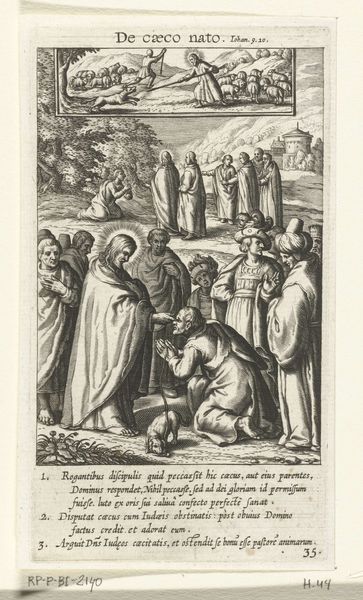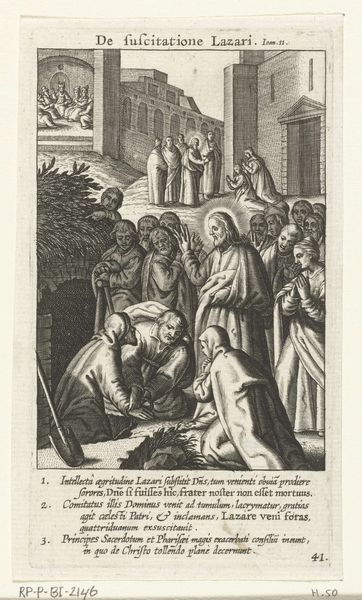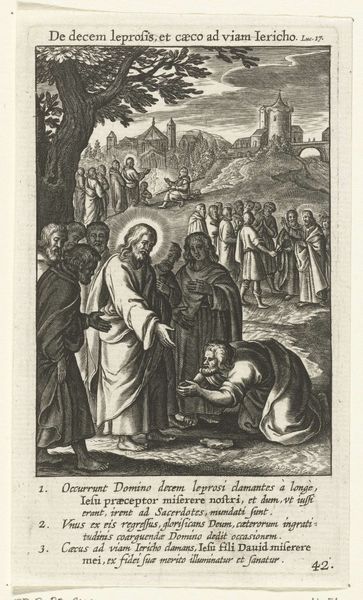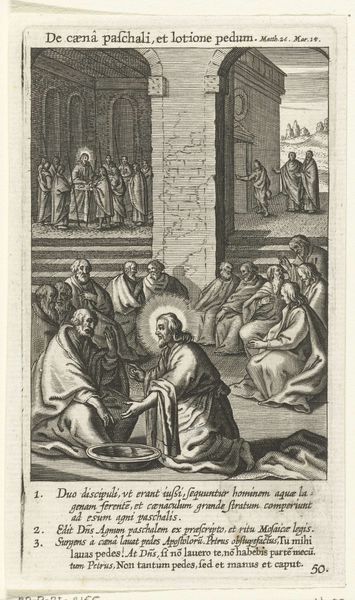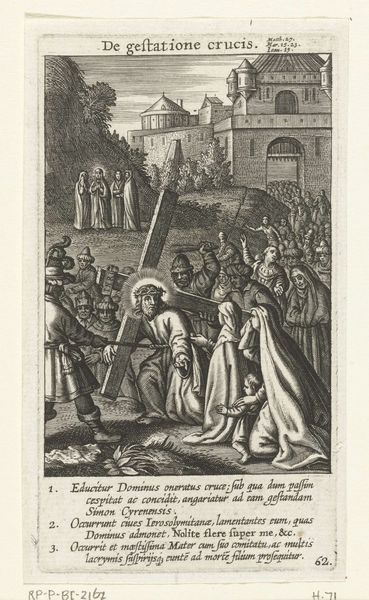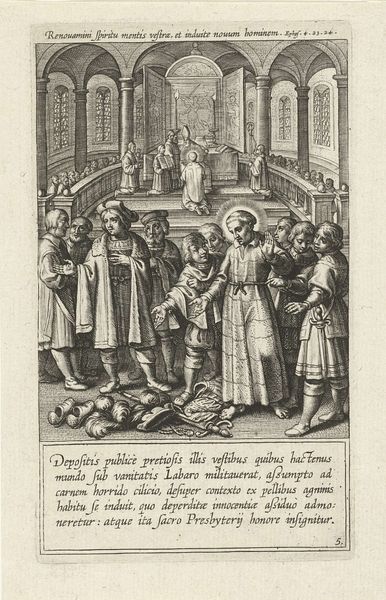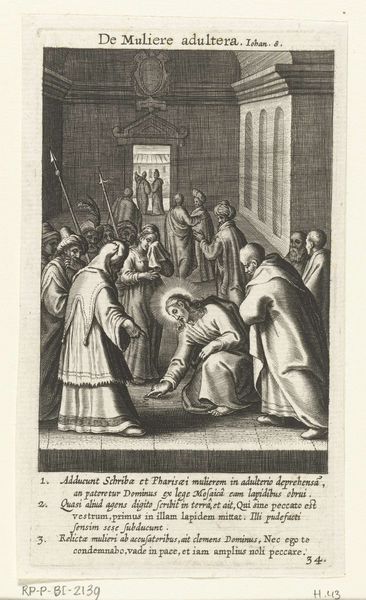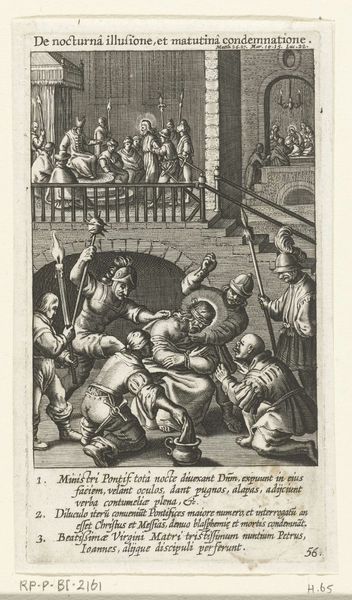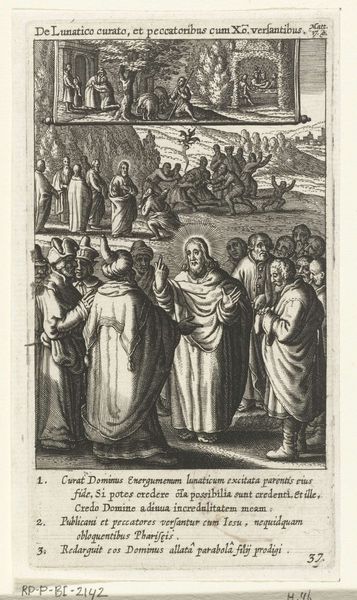
Christus geneest de knecht van de centurio van Kaparnaüm 1590 - 1622
0:00
0:00
boetiusadamszbolswert
Rijksmuseum
engraving
#
baroque
#
old engraving style
#
figuration
#
history-painting
#
engraving
Dimensions: height 133 mm, width 75 mm
Copyright: Rijks Museum: Open Domain
Curator: What a detailed engraving. This is "Christus geneest de knecht van de centurio van Kaparnaüm" by Boëtius Adamsz. Bolswert, dating back to between 1590 and 1622. I’m really struck by the textures he creates with line alone. It feels almost theatrical. What do you see here? Editor: I immediately notice how the architecture almost overwhelms the figures, despite the dramatic scene of Christ healing the centurion's servant. The density of lines creating light and shadow is remarkable. How would you interpret the significance of its material – the engraved lines on paper – in understanding its meaning? Curator: Exactly. Consider the process. Engraving demands skilled labor and allows for mass production, circulating images and ideas widely. It transformed religious narratives into commodities. How does the act of replicating and distributing this scene impact its message about faith and healing? Editor: It makes it feel almost… less special? Like it's democratizing access to religious stories but perhaps also diluting their power with repeated viewing. Could this be interpreted as a kind of "visual sermon" intended for broad consumption? Curator: Precisely! The materiality isn't just a vehicle for the image. The conscious decision to disseminate through print suggests the image becomes part of a broader social project. It moves from sacred artifact to didactic tool available across social strata, raising fascinating questions about who gets to interpret and consume these narratives. Does seeing the labor intensive process of printmaking alter how you engage with other forms of artistic creation and labor today? Editor: It definitely adds another layer of appreciation and critical analysis, understanding art as a product of both skill and the social forces of its time. Curator: Indeed. By examining the materials and mode of production, we can unpack the complex ways religious art was produced, consumed, and instrumentalized.
Comments
No comments
Be the first to comment and join the conversation on the ultimate creative platform.
